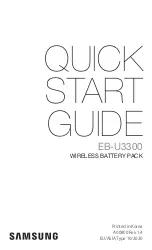
EC400 / EC450 series Power Control System
E
C
45
0
Issue 1
Page 6 of 13
12
th
June 2011
3 System Technical Information
The following section provides further technical information relating to the electrical system. You can
also access the supporting technical manual from
www.sargentltd.co.uk
3.1 Residual Current Device & Miniature Circuit Breakers
Residual Current
Device (RCD)
Miniature Circuit
Breakers (MCB’s)
RCD
Test
button
The Residual Current Device (RCD) is basically provided
to protect the user from lethal electric shock. The RCD will
turn off (trip) if the current flowing in the live conductor
does not fully return down the neutral conductor, i.e. some
current is passing through a person down to earth or
through a faulty appliance.
To ensure the RCD is working correctly, the test button
should be operated each time the vehicle is connected to
the mains supply (see section 2.4)
The Miniature Circuit Breakers (MCB’s) operate in a similar
way to traditional fuses and are provided to protect the
wiring installation from overload or short circuit. If an
overload occurs the MCB will switch off the supply. If this
occurs you should investigate the cause of the fault before
switching the MCB back on.
The following table shows the rating and circuit allocation for the three MCB’s
MCB
Rating
Output Wire Colour
Description
1
10 Amps
White
230v Sockets
2
10 Amps
White (Yellow for heater)
Extra 230v Sockets / Space Heater
2
16 Amps
Yellow
Alde heating (EC470 PSU Only)
3
10 Amps
Black (Blue for water heater)
Fridge / Water Heater /
12v Charger (internally connected)
3.2 Battery Charger
The EC400 / EC450 system incorporates an intelligent three-stage battery charger / power converter.
During stage 1 the battery voltage is increased gradually while the current is limited to start the
charging process and protect the battery. At stage 2 the voltage rises to 14.4V to deliver the bulk
charge to the battery. When the battery is charged, the voltage is decreased at stage 3 to 13.6V to
deliver a float charge to maintain the battery in the fully charged state. The charger can be left
switched on continuously as required.
The battery charger / power converter also provides power to the leisure equipment when the mains
supply is connected. This module supplies DC to the leisure equipment up to a maximum of 25 Amps
(300 Watts), therefore the available power is distributed between the leisure load and the battery, with
the leisure load taking priority as per the following example:
Leisure load
Available power for battery charging
5A
20A
10A
15A
15A
10A
20A
5A
WARNING
Under heavy loads the Charger case may become hot. ALWAYS ensure the ventilation slots have a
clear flow of air. Do not place combustible materials against / adjacent to the Charger































